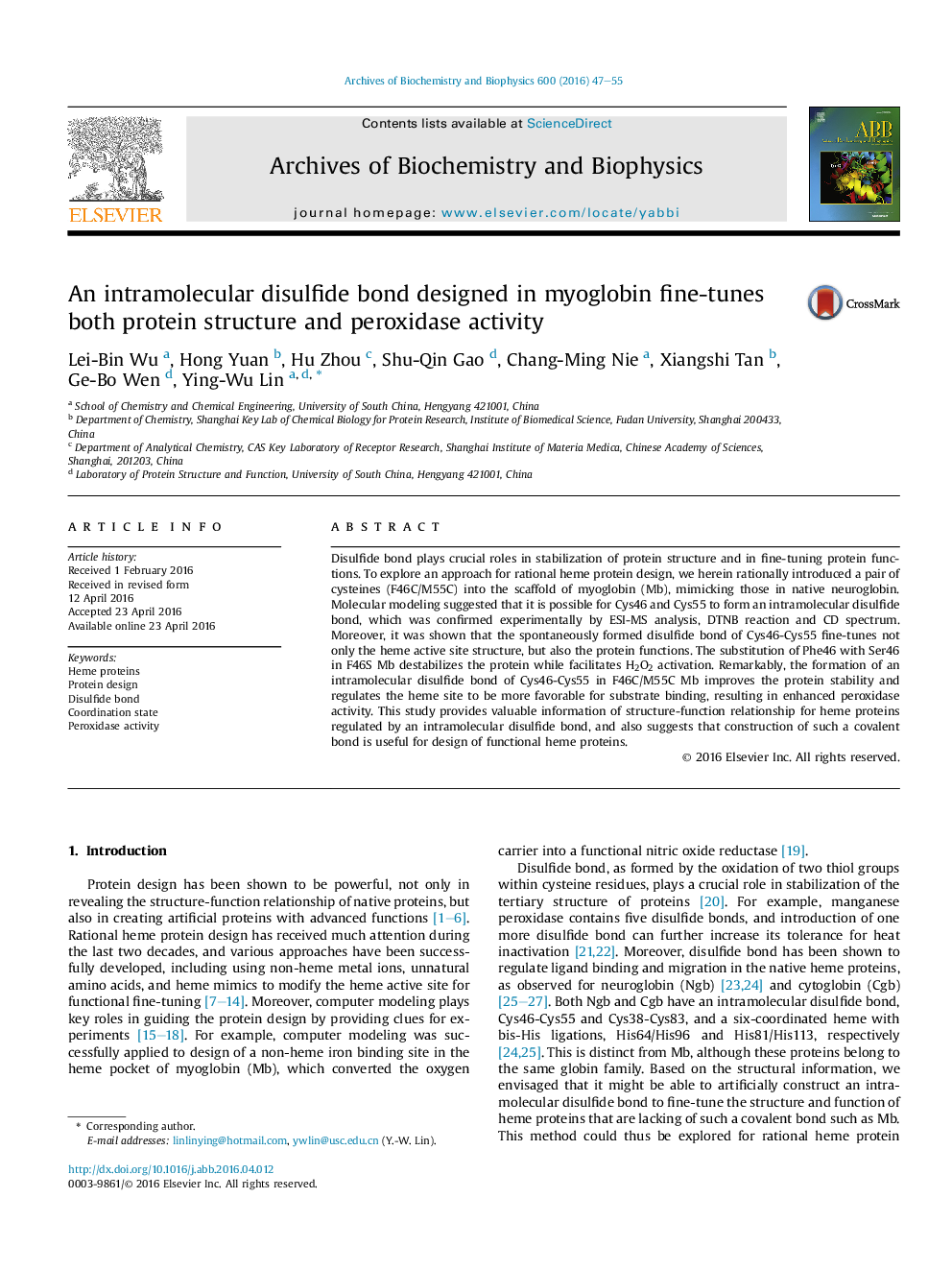| Article ID | Journal | Published Year | Pages | File Type |
|---|---|---|---|---|
| 1924719 | Archives of Biochemistry and Biophysics | 2016 | 9 Pages |
•A pair of cysteines (Cys46/Cys55) were rationally designed in myoglobin (Mb).•Cys46 and Cys55 formed an intramolecular disulfide bond automatically in Mb.•The disulfide bond was shown to fine-tune both the structure and function of Mb.•F46C/M55C Mb exhibits an enhanced peroxidase activity compared with Mb.•This study suggests that disulfide bond can be used for rational heme protein design.
Disulfide bond plays crucial roles in stabilization of protein structure and in fine-tuning protein functions. To explore an approach for rational heme protein design, we herein rationally introduced a pair of cysteines (F46C/M55C) into the scaffold of myoglobin (Mb), mimicking those in native neuroglobin. Molecular modeling suggested that it is possible for Cys46 and Cys55 to form an intramolecular disulfide bond, which was confirmed experimentally by ESI-MS analysis, DTNB reaction and CD spectrum. Moreover, it was shown that the spontaneously formed disulfide bond of Cys46-Cys55 fine-tunes not only the heme active site structure, but also the protein functions. The substitution of Phe46 with Ser46 in F46S Mb destabilizes the protein while facilitates H2O2 activation. Remarkably, the formation of an intramolecular disulfide bond of Cys46-Cys55 in F46C/M55C Mb improves the protein stability and regulates the heme site to be more favorable for substrate binding, resulting in enhanced peroxidase activity. This study provides valuable information of structure-function relationship for heme proteins regulated by an intramolecular disulfide bond, and also suggests that construction of such a covalent bond is useful for design of functional heme proteins.
Graphical abstractFigure optionsDownload full-size imageDownload high-quality image (355 K)Download as PowerPoint slide
